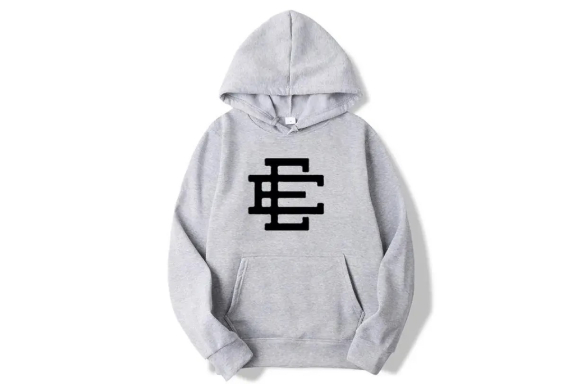The Market Analysis of Carbon Black With Focus on Key Properties
The following post focuses on the Carbon Black Market supply and demand structure with its in-depth analysis covering its applications, properties and pricing.
What is Carbon Black?
Carbon Black is a pure elemental carbon in the colloidal particle form produced by the thermal decomposition or incomplete combustion of gaseous or liquid hydrocarbons under controlled conditions. It belongs to the group of deep black, finely divided states of amorphous carbon. It is available in many forms, including furnace black, thermal black, acetylene black, and lamp black. In the purest state, it is present in a very fine powder state existing in a para-crystalline form of carbon that doesn’t have any crystal-like luster and has various disordered ordering of atoms.
Some Key Features of Carbon Black
- Particle Size– On the basis of electron microscopy, speciality carbon blacks have smaller particle diameters that give rise to higher surface area and tinting strength. The high surface area usually offers higher conductivity, greater jetness, improved weather ability, and higher viscosity but demands enhanced dispersion energy. The standard particle sizes range from around 8 nanometers to 100 nanometers.
- Structure– The standard of the three-dimensional fusion of carbon black particles for making aggregates might comprise a considerable number of particles. The degree and shape of branching the aggregates are called structure. Highly structured carbon blacks offer properties like excellent electrical conductivity, higher viscosity, and easier dispersion for speciality carbon blacks.
- Porosity– The porosity of carbon black is a fundamental property which may be controlled during the production process. It can impact the measurement of the surface area, offering a total surface area (NSA) more extensive than the external value (STSA). Conductive speciality carbon blacks are likely to have a high degree of porosity.
- Surface Chemistry or Surface Activity– This property comes from the manufacturing process and the heat record of carbon black and usually refers to the carbon black surface’s oxygen-containing groups.
- Physical Form– Its physical form is vital for matching a carbon black to the equipment by which it is dispersed. The beads or powder form can impact the handling and mixing characteristics. The final degree of dispersion is part of the mixing procedures and equipment used.
The Applications of Carbon Black Driving Up its Demand
Carbon Black has been primarily employed as a coloring agent. Owing to its various properties, like having nano-particles with functions like ultra-violet absorption and conductivity, it can be used in electronic equipment and devices. Its main applications are mentioned below:
- As a Colouring Agent for Ink and Paints
Due to its higher tinting strength in comparison to iron black or organic pigments, it is extensively used in newspapers, printing, Indian inks, and paints. It also functions as the black pigment for inkjet ink or toners. Furthermore, the high tinting strength and it is thermal stability make it ideal for its use in coloring resins and films that are heat-formed. It is also an excellent compound for absorbing ultraviolet light that offers great resistance against ultraviolet rays and a coloring effect when mixed in little amounts with resins. It’s also extensively used for general coloring for resins and films.
- As an Electric Conductive Agent and Electronic Equipment Related Material
The particles of Carbon black have a graphite-type crystalline structure that offers excellent electric conductivity making it ideal for use as conductive filler, being mixed in plastics, elastomers, paints, adhesives, films, and pastes. It also offers stable resistance, which makes it useful in electronic equipment-related materials such as several magnetic recording materials, display components, and OA rolls.
- Rubber Industry
In rubber compounding, Carbon Black is incorporated with natural and synthetic elastomers along with elemental sulfur, processing oils, and various organic processing chemicals, which undergo heating to result in the production of a series of vulcanized rubber products that use Carbon Black for providing reinforcement and improving resilience, tear-strength, conductivity, and other physical properties.
- In the Polymer Industry
Fine particle Carbon Black is used to derive a jet-black color. Also, it offers the ability to absorb detrimental UV light and convert it into heat, thus turning polymers like polypropylene and polyethylene, more resistant to degradation by UV radiation from sunlight. Furthermore, Specialty Carbon Black also finds use in polymer insulation for wires and cables. It also enhances the polystyrene’s insulation properties that are widely used in construction.
The Players Operating in the Carbon Black Market
- Mitsubishi Chemical Corporation
- Shandong Huadong Rubber Types Co., Ltd
- Phillips Carbon Black Limited
- Birla Carbon
- Orion Engineered Carbon
- Abu Dhabi National Oil Company (ADNOC)
Carbon Black Price Trend Movement
North America
The Carbon Black market value invariably fell in the North American Market recently, supported by frail market sentiments as well as reduced production costs. Since the downstream tire and automotive industry’s market performance did not hit the mark in terms of sales and industrial output, the Carbon Black demand from these industries decreased. Further, amid the dropping prices of natural gas and crude oil, the upstream cost of manufacturing Carbon Black lowered, which ultimately resulted in its fallen value in the domestic market.
Asia Pacific
As opposed to the pricing trend in North America, the Carbon Black prices significantly grew in the Asia-Pacific region, backed by strong downstream demand. As the Asia-Pacific region’s downstream tire and automotive industries revitalized, so did the Carbon Black offtake from these two industries. The market was primarily demand-side tilted; therefore, stiff market sentiment dominated the market.
Europe
Contrary to the North American and Asia Pacific region, the countries in Europe noticed stability in the Carbon Black market, which subsequently pivoted into a constant drop. The most significant factors that propelled the market value of Carbon Black in Europe were frail demand and declining energy prices. Since the tire and automotive industries underperformed in the market, the queries from these industries for Carbon Black dipped, finally leading to a reduced value. In addition, since Europe was prevented from its foreseen energy crisis aided by the appropriate planning and actions, the prices of energy dropped, also driving the lower price for Carbon Black.
Read more: https://thetechwhat.com/





